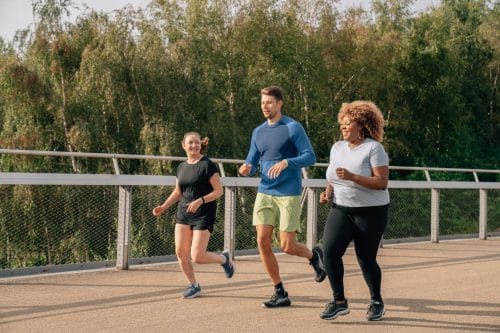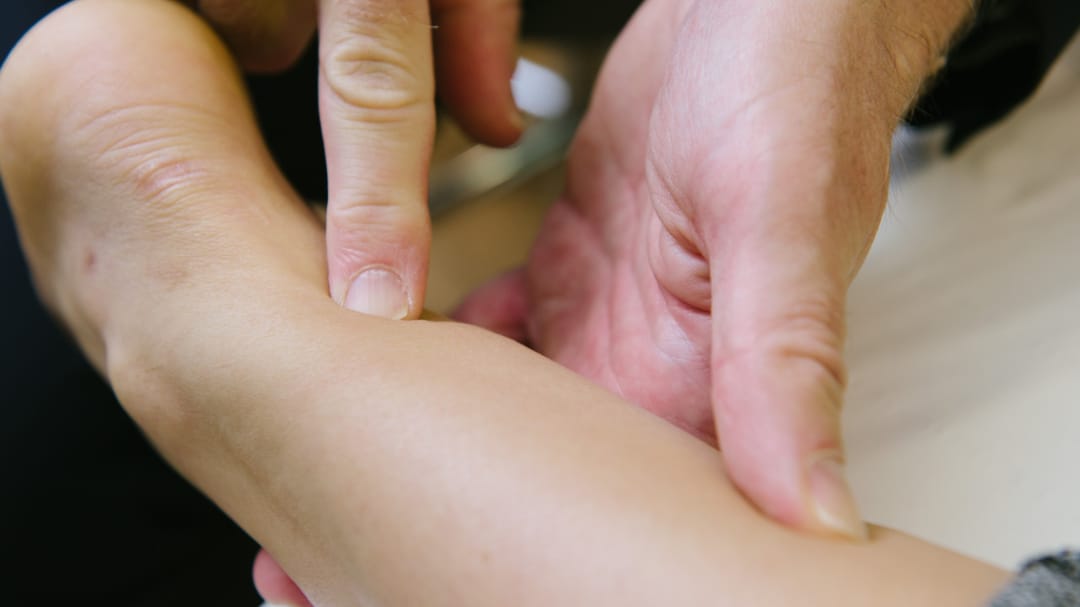Obstacle Course Racing: Tips for Training & Injury Prevention

Pure Sports Medicine
- 14 February, 2020
- Sport, Exercise & Musculoskeletal Medicine
- Strength & Conditioning
- Pain Management
- 4 min read
Obstacle Course Racing: Tips for Training & Injury Prevention

I did my first obstacle course race (OCR) in 2017: a 10km Rough Runner. I had a lot of fun but learned that I was far from fit enough to run at a good pace between the obstacles (especially the hills…).
My next was a Tough Mudder in 2018; I was reminded by a friend 2 days before the event that it was in fact a 10 mile event (not the 10km that I thought I had signed up for) and my reflection again was that, although I really enjoyed it, I still wasn’t anywhere near fit enough for the running… (hardly surprising given my lack of training). This all changed in 2019 when I retired from rugby and took up running instead. Taking part in a 10 mile Tough Mudder again in May 2019 was a different challenge altogether! I was fit enough this time but wasn’t prepared for a freakishly cold day in May to give me the shivers for the rest of the day.
Feeling fitter and stronger than ever I’m looking forward to trying out a Spartan race in late summer of 2020 (when I hope it will be plenty warm). All this is to highlight the different challenges that OCR throws at you. Be it competing in events lacking fitness, or being unprepared for weather, there’s always something to learn and improve upon for future events. This must be why so many now flock to these events every year.
The success of OCR events may arise from the notion that they can appeal to all! They are a challenge for Elite Ellie and CrossFit Chris, whilst still being a fun day out for Beginner Betty and her mates all dressed in tutu’s.
There’s the adrenaline rush that comes from testing yourself on tough obstacles, and the camaraderie of a mass participation event that makes us feel part of a special muddy club. Over the past decade, participation in obstacle course racing (OCR) has exponentially increased; 5.3million participated globally in 2016.
As people search for an enjoyable outdoor activity that challenges both mental and physical toughness, more and more have sought the novelty of OCR. The added incentive is that you can often take part as a team; encouraging friends, work colleagues and even families to brave the madness. Following the development of the International Obstacle Racing Federation, steps are now even being taken for OCR to become an Olympic sport! It is quite clearly not just a fad.
The appeal is obvious, but we should also consider the risks. If we can understand the risk, then it is easier to prepare and therefore mitigate that risk. The diverse nature of OCR events and the environments in which they are held make the injury possibilities varied, and at times severe, especially when compared to a standard road running event. But it seems that it is this very environment that makes OCR such an appealing way to exercise. As far back as the Roman era, stories were told of athletes being put through grueling obstacle courses to prepare them for action. Obstacle courses have long been used for training and fitness testing in the military but only recently has this style of exercise become such a popular leisure activity.
A recent study has found that the injury rate across several different OCR events is between 0.4 and 3.74%. That equates to between 4-37 injuries per 1000 participants. This tells us that this is a safe way to exercise overall. Interestingly, there’s no link between the length of a race and the injury incidence suggesting that injury risk reduction strategies are an important part of all OCR events, no matter how long or short. Up to 75% of injuries that present for medical care at an OCR event are musculoskeletal injuries.
Recent evidence taken from team sport injury research suggests that stronger and fitter athletes get injured less. If we apply the same logic to OCR events, then it seems sensible to advise the same approach. As well as reducing injury risk, the other benefit to improved strength and fitness is that performance will be improved too. This may help you run for more of the race or perhaps even to run faster! Or it could be an ability to pull your body weight up a wall or having the power to sprint up a steeper ramp. But if your new to this and are concerned about your strength, there will always be a fellow racer happy to help you on the obstacles. This team spirit across all races is what makes the events so enjoyable.
My 7 tips to ensure a successful race
1. Start training early; progressively build up volume and intensity of both cardiovascular and resistance training based on your baseline fitness
2. Run 1-2 times per week (preferably one of the runs should be on a terrain like that of your event, which will likely include hills!)
3. Aim to spend 2-3 sessions per week building muscle strength specifically to meet the demands of your event; this should include compound resistance exercises such as:
- Lunges
- Squats
- Deadlifts
- Weighted rows
- Shoulder press
- Pull- ups
- Push-ups
- (If you struggle with any of these, then there are more basic variations that a physio or Strength & Conditioning coach can help you with)
4. If you’re in pain during training, back off for a few days. If it doesn’t settle, seek medical advice from a professional
5. Optimal sleep (8+ hours) and nutrition are your ultimate recovery strategies, don’t take shortcuts on these!
6. Dress appropriately: gloves (trial these before the event), cover lower legs, wear warm but exercise appropriate clothing (this may include skins)
7. Get a good meal in before the race and start your hydration the day before; urine should be clear by the time of the race (a quick trip to the loo just before the start will no doubt be needed if you get this right…)
Being fitter and stronger should help you enjoy the race and reduce your risk of injury, if you want to train from a plan that’s bespoke to your specific needs then you should consider seeing one of our Strength & Conditioning Coaches.
If you have pain that is getting in the way of training or perhaps even preventing you from competing, then consider seeing one of our Physiotherapists.
One final tip: a post-race massage would go down very well; you will inevitably feel sore after the event (just remember that the soreness is just a reminder that you’ve just done something awesome!).

Advice
Over the last 20+ years our experts have helped more than 100,000 patients, but we don’t stop there. We also like to share our knowledge and insight to help people lead healthier lives, and here you will find our extensive library of advice on a variety of topics to help you do the same.
OUR ADVICE HUBS See all Advice Hubs

